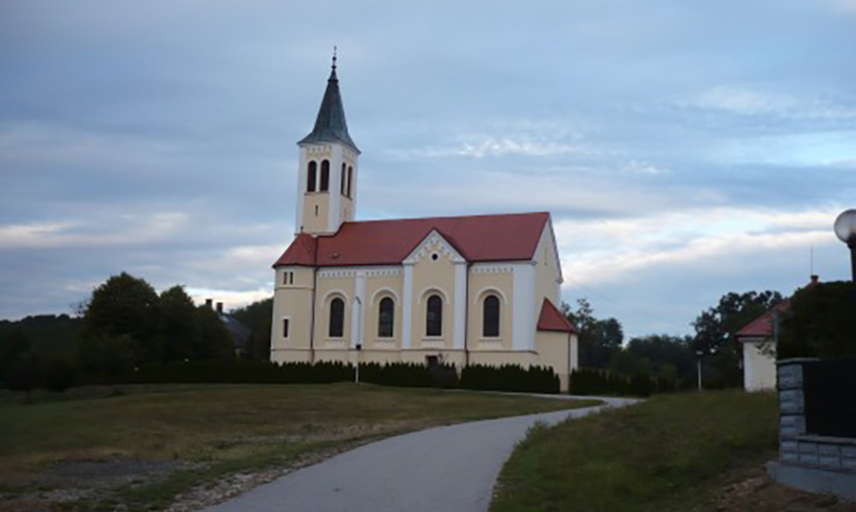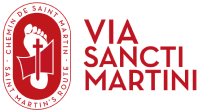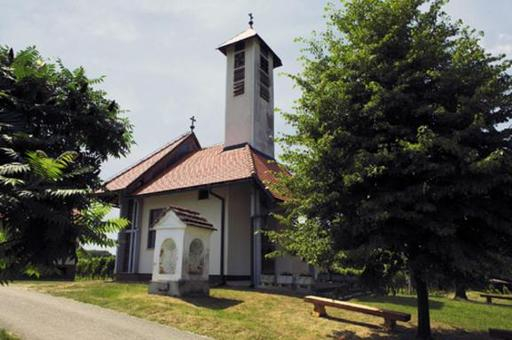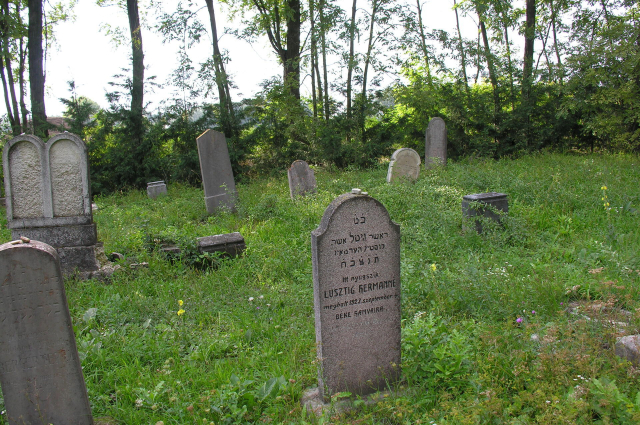
Stop point - Domanjševci - Domonkosfa
Domonkosfa is a settlement on the Slovenian-Hungarian language border. Its name, which appears in the old written sources in both Hungarian (Domonkosfalwa, Damokosfa, Domonkosfa) and Slavic (Domonkosoc) forms, probably derives from one of its early (XII-XIII century) owners
Domonkosfa is an old ecclesiastical site, whose church, formerly dedicated to the Virgin Mary, now dedicated to Saint Martin, was built in the 13th century. The building is a very important Romanesque monument. Its fate is also fortunate, as while two nearby churches of a similar age (St. Wenceslas' Church on the outskirts of Kercaszomor, St. Andrew's Church in Hodos) were destroyed, only the frescoes of this one have been lost. Apart from minor alterations, the building remains intact. The first record of the church dates back to 1285. It was in the hands of the Protestants towards the end of the 1500s and was used by them until 1732, when István Rosty, deputy governor of Vas County, reclaimed it for the Catholics. At that time the frescoes decorating the church were still there. In a note on the condition of the building we read the following.
A special feature of the brick church is the Romanesque doorway with a lining on the south side. The relief relief of the doorway has attracted the attention of art historians. The traditional Agnus Dei (Lamb of God) motif is modified here, with the sculptor placing not a lamb but another animal (probably a lion) above the entrance.
In the Middle Ages, Domonkosfa was shared by several families. Most of the serfs belonged to the Nádasdy Darabos and Prosznyak families, but others also had small estates here (e.g. the Szerdahelyi Bitter, Hegyi, Rajky, Újváry, Tarródy, etc. families).
Domonkosfa, together with the other settlements in the area, belonged to the territory of the Turkish occupation, and the inhabitants paid taxes to the Turks as well as to the Hungarian landlord. It is interesting to note that, in addition to the usual taxes and services, the inhabitants of the village were also obliged to hand over three cubic metres of prunes to the Turks every year.
Fortunately, the Hungarian language 'village law' of 1640 has survived. The "local decree" not only provides for the election of 12 jurors, but also for the payment of a "language fee" for women who gossip.
A census dated 1720 makes it necessary to note that the village has a large number of potters. The village had little forest at that time, and if they needed wood, they bought it from the people of Caporn.
The geographic name Iron-lik, north of Domonkosfa (extending to Sal and Kapornak), refers to the very early period of iron working. The turf iron, popularly known as iron shit, which can still be found in this area, was probably exploited in the 11th and 13th centuries. It is formed in the upper layers of the soil, mostly in waterlogged wetlands. This iron formation, although easy to extract, is suitable only for the production of a small quantity of low-grade iron.
The majority of the population of Domonkosfa is still evangelical. Their church was built in 1902 in neo-Romanesque style. In addition to the church buildings, two old mills (Zlebich mill, Chahuk mill) and some old farmhouses built on the waters of the Little Kerka are also noteworthy architectural monuments.
Until the late 1800s, Bükalja, now part of Domonkosfa, was an independent settlement belonging to the historical Guard. In the mid 1500s it became the property of the Batthyányi family. The inhabitants were partly Reformed and partly Evangelical. At the end of the 1800s, there were first plans to merge Bükalja and Szomoróc, but as neither of the villages had the necessary administrative infrastructure, Bükalja was merged with Domonkosfa and Szomoróc with Kerca, half a century later.
*** Translated with www.DeepL.com/Translator (free version) ***
- Domanjševci
Hasonló találatok
Stop point - Kobilje/Kebeleszentmárton
Kobilje/Kebeleszentmárton
St. Martin's Hill, St. Martin's Church
Kebele Creek was first mentioned in 1208 in the form of Kobula in a document. The...
Stop point - Sopron
Sopron - ÓzsinagógaThe former synagogue stands in the courtyards of two late medieval buildings in the city centre. The first written records of...
MorePoint of interest - Darnózseli - Jewish Cemetery and Memorial Wall
Darnózseli -Zsidó temető és EmlékfalJews have lived in the settlement since the mid-1800s. The village of Darnózseli, which was united with Mosondarnó and Zseli in...
MoreStop point- Sopron - Church of the Assumption (Goat Church)
Sopron - Nagyboldogasszony templom (Kecske templom)The Franciscan monks first built their monastery, then around 1280 they built a church next to it, which is an outstanding work...
More

